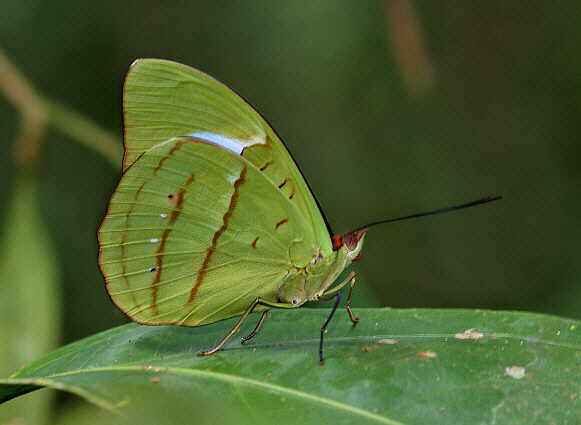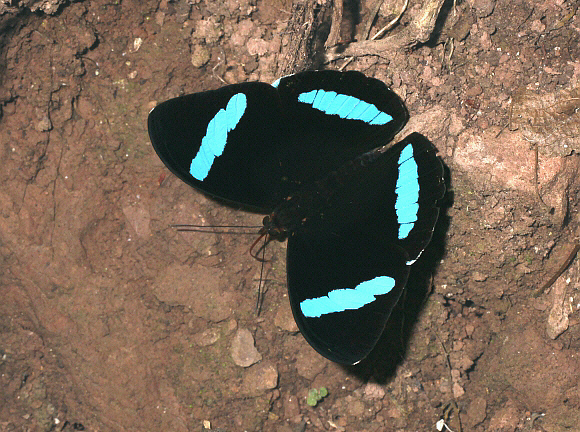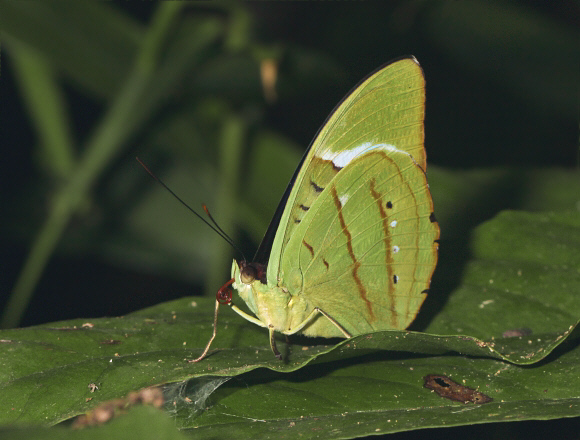 Nessaea hewitsoni, Madre de Dios, Peru – Adrian Hoskins
Nessaea hewitsoni, Madre de Dios, Peru – Adrian Hoskins
Introduction
There are 4 known members of the genus Nessaea, namely aglaura, batesii, hewitsonii and obrinus, all of which are confined to the neotropical region.All of the species have similar undersides. The uppersides of Nessaea males are very dark brown, with bright sky blue diagonal bands on the forewings. The male of hewitsonii also has blue markings on the hindwings, but the remaining species including batesii have orange patches on the hindwings instead. The females of all species have plain brown hindwings, blue diagonal bands across the forewings, and elongated reddish spots within the discal cell of the forewings.
Nessaea hewitsoni is found throughout eastern Andes from Colombia and Venezuela to Bolivia, and across the western Amazonas of Brazil.
 Nessaea hewitsoni, Catarata Bayoz, La Merced, Peru – Adrian Hoskins
Nessaea hewitsoni, Catarata Bayoz, La Merced, Peru – Adrian Hoskins
Habitats
Nessaea are usually seen singly, and breed in wet primary rainforest at altitudes between 0-800m. They are not usually encountered in secondary forest, and it is very unusual for them to be seen in open sunny areas, although I have observed males of Nessaea aglaura in forest edge habitats and degraded forest in Ecuador.
Lifecycle
The yellowish-green barrel-shaped eggs are laid singly on leaves of seedling Alchornea, Plukenetia and other trees in the family Euphorbiaceae. The larva when fully grown is jade green. Each body segment adorned with enormous whorled spikes which are amber in colour. The head is bluish and armed with a pair of long head horns. The larva adopts the usual Biblidini resting posture with it’s body arched and it’s face appressed to the substrate so that the spines are directed upward. If it is molested the larva twitches violently, swinging it’s head from side to side. The pupa is dark green, and is attached by the cremaster from the upperside of a leaf, projecting horizontally.
Adult behaviour
The butterflies are usually found as singletons, but it is not unusual to see several males and one or two females during an hour long walk along a narrow forest track in suitable habitat.
All Nessaea species are fast flyers. When at rest they are very alert to movement. If alarmed they fly off very rapidly and with great agility. They usually resettle a short distance away but invariably return to the original spot within a few minutes. Normally they settle on foliage about 1-3m above the ground, and close their wings immediately upon landing. They then wait motionless for a few minutes, and if undisturbed they will slowly open their wings to bask.
Males feed at fallen fruit, and can be baited with plantain. They are also attracted to mammal dung and urine on forest tracks, but unlike many other members of the Biblidini they are not attracted to sunny river beaches or other open areas.

Nessaea hewitsoni, Catarata Bayoz, La Merced, Peru – Adrian Hoskinsdiscal cell of the forewings
